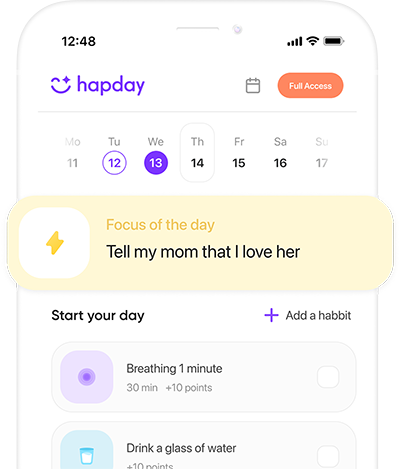Table of Contents
- Understanding ASD and Social Anxiety
- Recognizing Overlapping Symptoms
- Effective Coping Strategies
- Conclusion
Understanding ASD and Social Anxiety
What is ASD?
Autism Spectrum Disorder (ASD) is a neurodevelopmental condition that affects how individuals interact socially, communicate, and behave. The Centers for Disease Control and Prevention (CDC) notes that roughly 1 in 44 children in the U.S. have been diagnosed with ASD. The term “spectrum” highlights the broad range of symptoms and severity, meaning some people may need significant support while others lead independent lives.
Understanding Social Anxiety
Social anxiety disorder, often termed social phobia, is characterized by an overwhelming fear of being watched or judged in social settings. This can hinder daily activities, making it difficult to maintain relationships and perform well in professional or educational environments. The National Institute of Mental Health (NIMH) estimates that around 7.1% of U.S. adults experience this condition annually.
How They Intersect
Even though ASD and social anxiety are different, they frequently overlap. Research reported in the Journal of Autism and Developmental Disorders suggests that up to 50% of individuals with ASD may also suffer from social anxiety. This overlap can be exacerbated by the communication difficulties inherent to ASD, leading to an increased awareness of social challenges and, consequently, elevated anxiety.
Recognizing Overlapping Symptoms
When ASD and social anxiety coexist, certain symptoms often appear together:
- Social Withdrawal: Fear or anxiety can lead individuals to avoid social situations altogether.
- Communication Difficulties: Misinterpretations due to struggles with verbal and nonverbal cues can increase social anxiety.
- Sensitivity to Social Cues: A heightened awareness of expressions and tones can become overwhelming.
- Fear of Judgment: Concerns about making mistakes often result in avoiding social interaction.
Effective Coping Strategies
Managing both ASD and social anxiety requires a comprehensive approach. Here are some strategies grounded in research and practice:
1. Cognitive Behavioral Therapy (CBT)
CBT is a go-to treatment that addresses anxiety by reshaping negative thought patterns and behaviors. It involves:
- Cognitive Restructuring: Helping individuals rethink negative thoughts.
- Exposure Therapy: Gradually introducing social situations to reduce fear.
- Social Skills Training: Building and reinforcing positive interactions.
2. Mindfulness and Relaxation Techniques
Mindfulness can alleviate anxiety’s physical symptoms. A study in “Research in Autism Spectrum Disorders” showed its effectiveness for those with ASD. Techniques include:
- Breathing Exercises: Like deep breathing or progressive relaxation to calm nerves.
- Meditation: Regular practice that enhances self-awareness.
- Mindful Observation: Focusing on surroundings to lessen social anxieties.
3. Social Skills Training
Especially beneficial for those with ASD, this involves:
- Role-Playing: Practicing social exchanges in a safe setting.
- Constructive Feedback: Encouraging growth through positive reinforcement.
- Peer Groups: Engaging with others to practice newly acquired skills.
4. Medication
Sometimes medication is needed alongside therapy. Selective Serotonin Reuptake Inhibitors (SSRIs) can help manage symptoms, with ongoing consultation with healthcare professionals essential.
5. Supportive Environment
Understanding and accommodating needs at home, school, and work is crucial:
- Education: Informing peers and family to foster empathy.
- Routine: Predictable schedules can provide comfort.
- Safe Spaces: Designating areas for retreat during overwhelming times.
6. Leveraging Technology
Tech tools can support anxiety management and skill development:
- Apps: Solutions like Headspace offer relaxation exercises.
- Online Communities: Provide shared experiences and support.
- Software Programs: Like “JASPER,” focusing on improving social communication.
7. Active Parental and Caregiver Involvement
The role of parents and caregivers cannot be overstated:
- Participation: Join therapy sessions or practice exercises at home.
- Encouragement: Celebrate achievements, no matter how small.
- Advocacy: Ensure schools provide necessary accommodations.
Conclusion
Managing ASD and social anxiety simultaneously is undoubtedly challenging, but with the right tools and support, individuals can enhance their social interactions and quality of life. A balanced blend of therapy, mindfulness, technological resources, and strong community or family support can empower those affected to engage more confidently with the world. As our understanding continues to grow, so too will our ability to craft more effective interventions, cultivating environments where everyone feels understood and supported.


This article really opened my eyes to the intersection of ASD and social anxiety. I had no idea that so many people with ASD also face social anxiety. The coping strategies mentioned, especially CBT, sound like they could be very beneficial. It’s great to see more resources being shared for individuals who struggle with these challenges!
I appreciate the detailed explanation of ASD and social anxiety, but I wonder if some coping strategies might not work for everyone. It seems like a one-size-fits-all approach might overlook individual needs. Would love to hear more about personalized strategies!
Mindfulness techniques mentioned here are fantastic! I started practicing meditation recently and it has helped me tremendously with anxiety. It’s amazing how just focusing on your breath can make a big difference in managing stress levels.
I think it’s funny how we often avoid social situations because we fear judgment, but in reality, everyone else is probably just as anxious! We should start a club for socially anxious folks – ‘The Shy Society’ or something! 😂 Just imagine how awkward our meetings would be!
The mention of supportive environments really resonates with me. Having understanding friends and family can make such a difference in managing both ASD and social anxiety. It’s crucial that those around us know what we’re going through; awareness is key!
“Leveraging technology” is such an important point! I’ve found several apps that help me practice social skills in a low-pressure environment. It’s exciting to see technology playing a role in mental health support, making resources accessible to those who need them.
“Active parental involvement” is vital! As someone who has experienced this firsthand, I can confirm that having parents who are engaged makes all the difference. They really help you navigate through tough times and celebrate the small wins.
“Communication difficulties” hit home for me; sometimes it feels impossible to express how you feel when you’re overwhelmed by anxiety. This article captures those feelings well! Anyone have tips on getting better at expressing oneself?
“Fear of judgment” sounds familiar; it’s like you’re constantly under a microscope! That said, knowing I’m not alone in this struggle helps ease my anxiety a bit. Does anyone else have similar experiences? How do you cope?
I’m curious about medication options mentioned here but also apprehensive about side effects. Has anyone found SSRIs helpful without feeling too spaced out? Would love to hear personal experiences!
SSRIs have worked well for me, but it took time to find the right dosage without feeling weirdly detached from reality.
I was nervous about meds too but they helped stabilize my mood while I worked on therapy techniques!
This article offers such an insightful overview of ASD and social anxiety! I really appreciate how it breaks down the symptoms and overlaps between the two. It’s not only informative but also very encouraging for those who may feel isolated. The coping strategies provided are practical and can genuinely help individuals navigate their challenges. Thank you for shedding light on this important topic!
While the article tries to be comprehensive, it feels overly optimistic about managing ASD and social anxiety. Not everyone has access to therapy or supportive environments, and suggesting simple coping strategies may be misleading. The reality is far more complex, and glossing over these difficulties does a disservice to those truly struggling.
The intersection of ASD and social anxiety is indeed a critical area of research. It’s fascinating to see how overlapping symptoms can complicate both conditions. By identifying common symptoms like communication difficulties and fear of judgment, we can better tailor support strategies. This article contributes well to our understanding of these disorders.
I find it hard to believe that such a high percentage of individuals with ASD also experience social anxiety as mentioned in the article. Isn’t it possible that some people might misinterpret their challenges as anxiety? I think we need more nuanced discussions instead of blanket statements about these conditions.
‘Apps for relaxation’? That sounds like a perfect way to distract yourself from real-world problems! Maybe next time they can suggest we just use our smartphones to solve all psychological issues! Seriously though, while technology has its place, nothing beats personal interaction for building social skills.
“Mindfulness techniques?” I guess you could say they’re all the rage! But really, who knew calming your mind could be as trendy as wearing skinny jeans? Jokes aside, it’s refreshing to see practical tips included in an article about serious topics; balancing humor with seriousness is essential for engaging readers!
‘Leveraging technology’ really resonated with me! As a parent, I’ve seen firsthand how tools like apps can make a significant difference in my child’s life. The blend of traditional coping strategies with modern technology provides families like mine various options that empower our kids in unique ways.
‘Supportive environment’ sounds nice in theory but what does that really look like? It would be great if there were more concrete examples rather than just abstract concepts thrown around. Every family situation is different, so let’s get specific about what truly helps!
“Cognitive Behavioral Therapy” sounds fancy but let’s not forget—therapy isn’t a one-size-fits-all solution! Some people might find other methods resonate better with them than traditional CBT approaches. It’s essential we explore various pathways rather than stick rigidly to one method.
‘Active parental involvement’ sounds great until you consider that not every parent knows how to engage effectively with their child’s needs. The article gives good advice but fails to address the complexities involved in familial relationships when dealing with mental health issues.